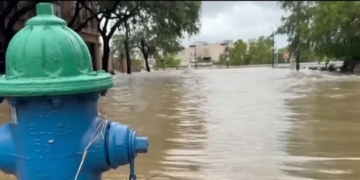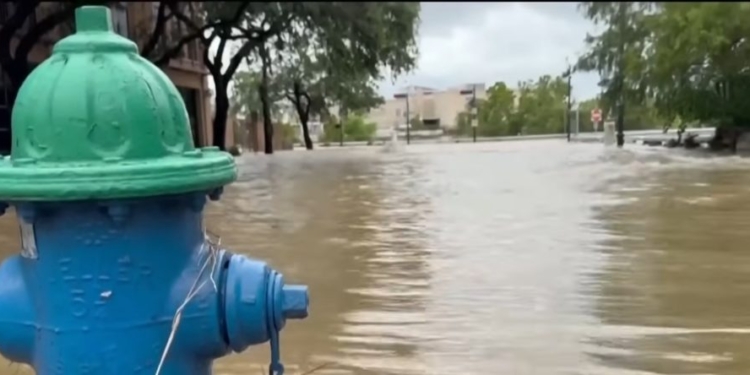Hurricane Beryl barreled through Texas this week, with the harshest eastern half of the storm traversing directly through the state’s biggest population and industrial center of Houston, home to as many as six million residents in the greater metropolitan area.
That was Monday and Tuesday and, as we reached the end of the work week, people in the media were wondering why as many as one million residents were still without electricity service as of Friday?
Climate alarmists want to blame it all on the all-knowing, all-seeing, all-powerful climate-change boogeyman — and for once they are at least partially right. How about that?
Some others want to place the blame on the state’s beleaguered grid managers at the Electric Reliability Council of Texas (ERCOT), but that is really a misdirection.
At least this time, we haven’t seen anyone (yet) trying to falsely blame it all on the natural-gas system, or making the hilariously absurd claim that wind, solar and the state’s miniscule fleet of stationary battery facilities somehow “saved the day.” Thank goodness for small blessings.
The reality is that the lingering power outages in Houston can honestly be attributed to three main factors: Rapid population growth, simple geography and the greening of the planet as the percentage of atmospheric carbon dioxide has risen in recent decades.
First, population growth: In response to a question asking why the company responsible for maintaining the grid’s power-line infrastructure in the region, CenterPoint Energy, has failed to meet the goals for improving reliability it laid out to Texas policymakers in 2019, a company spokesperson noted that the region has seen a growth of more than 300,000 new residents since that time. This means the company has been forced to allocate more capital to expanding the infrastructure system to account for what amounts to a new, mid-sized city, and less on hardening the system that existed five years ago.
Next, geography: Much of the Houston area sits on reclaimed swamp land, a compact geographic area traversed by a series of bayous and rivers. Some in the past have advocated that power lines be buried rather than remain sitting atop a web of tall polls, but the nature of the land and soil itself makes doing that impractical if not impossible.
Finally, there is the greening of planet Earth in recent decades: Here is where the climate alarmists have a valid point. Carbon dioxide, the climate alarmists’ favorite fake “pollutant,” is, after all, plant food, and its percentage rise in the atmosphere has resulted in the correspondingly rapid growth of trees and all other plants.
Combine that with Houston’s generally plant-friendly climate, which is similar to that of Bangkok, Thailand. It should surprise no one that the region’s high humidity, warm temperatures and extended growth seasons have caused CenterPoint to increasingly struggle to prevent falling trees from damaging nearby power lines.
This is nothing new for longtime Houstonians. My wife and I lived in Houston from 2003 to 2016. When Hurricane Ike came through in 2008, the Heights neighborhood in which we lived saw hundreds of trees uprooted by the winds. Power lines were downed across the region, and a 120-year-old home behind us was destroyed when a 300-year-old oak tree fell on it, knocking the home off its pier-and-beam foundation. We were among the very lucky ones and only lost power for a single day. Many across the Houston area were without power for weeks, some even for months. These things happen during and after hurricanes.
Everyone in the media should take a deep breath and try to understand the scale and complexity of the job officials at CenterPoint and other grid infrastructure companies around the country face in the wake of storms like Beryl. When CenterPoint says its people are working around the clock to get power restored, that is exactly what is happening.
It is certainly appropriate to ask hard questions when so many people are suffering while work progresses. But it is completely inappropriate to be pointing fingers at myths and boogeymen when the truth is so much more complex and less exciting.
David Blackmon is an energy writer and consultant based in Texas. He spent 40 years in the oil and gas business, where he specialized in public policy and communications.
The views and opinions expressed in this commentary are those of the author and do not reflect the official position of the Daily Caller News Foundation.
Featured image credit. (Screen Capture/PBS NewsHour)
All content created by the Daily Caller News Foundation, an independent and nonpartisan newswire service, is available without charge to any legitimate news publisher that can provide a large audience. All republished articles must include our logo, our reporter’s byline and their DCNF affiliation. For any questions about our guidelines or partnering with us, please contact [email protected].



























 Continue with Google
Continue with Google